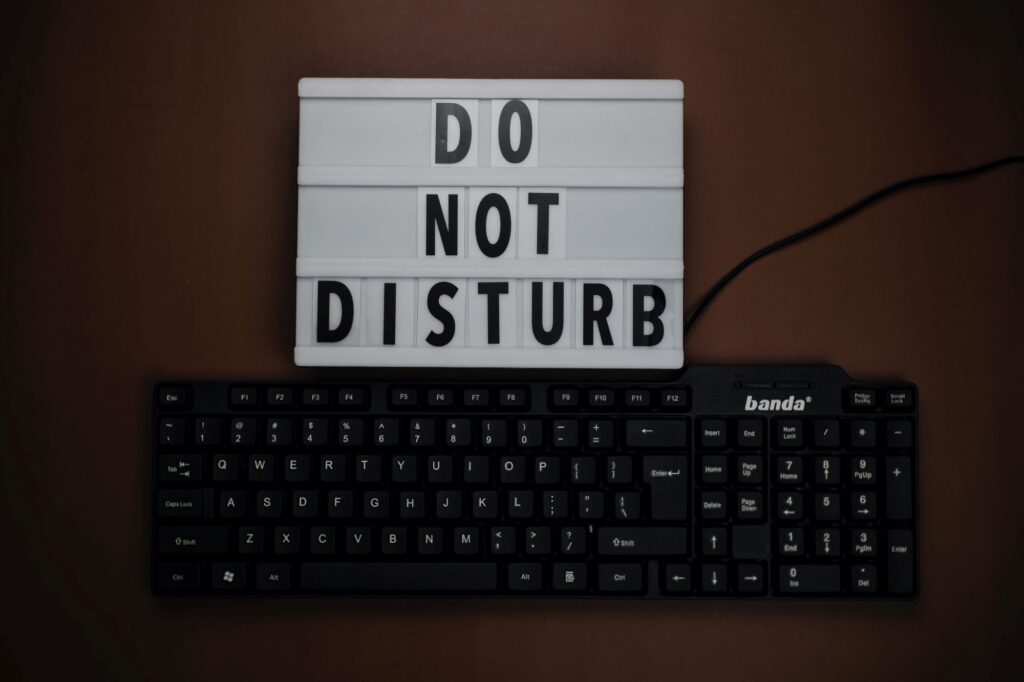Has anyone ever said this to you, perhaps while scrolling through their phone and paying you little attention?
Have you ever missed a key part of a conference call while placing an Amazon order or responding to a text or email? Perhaps you’ve made a dangerous driving mistake while lost in thought? (I have.) Or maybe you’ve read the same paragraph over and over, as the email notifications light up in your inbox?
Multitasking—it’s the modern-day superhero skill everyone claims to have, yet science tells us it’s more of a supervillain in disguise. We’ve all fallen prey to its allure, attempting to conquer several tasks simultaneously, only to find our results lackluster.
In a world buzzing with constant stimuli, from the persistent ping of notifications to the pressure to juggle multiple responsibilities, we’ve been led to believe that multitasking is the key to success. But what if I told you that multitasking isn’t the efficiency booster we think it is? In fact, it might be sabotaging our productivity without us even realizing it.
Join me as we unravel the myth of multitasking, dissect its impact on our brains, and explore three simple strategies to reclaim our focus and increase our productivity. It’s time to embrace a more effective approach to work and life—one task at a time.
Understanding Multitasking’s Impact on the Brain
Studies on the effects of multitasking reveal concerning findings. I’m not talking about multitasking when one of the tasks is more mindless, such as eating a snack while cleaning the kitchen, or listening to music while writing an article. In cases such as this, one activity plays a background role to the primary activity.
I’m talking about situations in which both tasks demand interpretation and processing—including those times when we must engage in meaningful conversations instead of scrolling on our phones. Scientific studies demonstrate the detrimental effects of multitasking not only on task completion but also on learning, concentration, information recall, relationships, and emotional regulation.

Our brain’s focus hub is the prefrontal cortex. When we focus on one task, both halves of this cortex engage, enabling streamlined mental processing. When we add another task, the brain divides. One half manages one task while the other manages the second task. The result? Two independent brain halves each chase their own goal.
In 2019, Kevin P. Madore, Ph.D. and Anthony D. Wagner, Ph.D., both Stanford researchers, conducted a study on this so-called multitasking. Their research revealed that multitasking places increased demands on our cognitive systems that support control and sustained attention. In other words, despite our best efforts to manage all these competing demands, multitasking taxes our brains and generally results in performance deficits.
It’s About Switch-Tasking, Not Multitasking
As the mountain of research shows, when we think we’re multitasking, we’re actually switch-tasking. Shifting attention between tasks leads to being half-engaged, half-efficient, or entirely neglecting one task over the other. Yes, both tasks might get done, but their quality often suffers.
Get rid of any notions that you can pay attention to two tasks at a time. You are paying all of your attention to one task, ignoring the other, or you are giving 50% effort, at best, to each task.
And if you introduce a third task? It’s beyond your brain’s capacity. Your brain only has two hemispheres to manage tasks! If you claim to be an excellent multitasker, that may be your perception, but science disagrees. And the people in your life may disagree, too.
Researchers agree that our brains will be healthier in both the short- and long-term if we redesign our environments and prioritize emotional and physical health to counter our hyper-connected lifestyle. This begins with minimizing multitasking. Let’s focus (without distraction!) on three simple strategies, applicable both in the workplace and beyond, to combat multitasking.
Strategies to Combat Multitasking
Embrace Single-Tasking
Shifting between tasks incurs a cost. There’s a mental lag, a period where your brain readjusts its focus from the previous task to the new one, often unnoticed. Picture it this way—your brain is tying up loose ends from the previous task, even if you’re not consciously aware. The more you switch, the more this catch-up time accumulates, translating to reduced productivity. By concentrating on one task at a time and minimizing switches, you decrease the impact of attention delays, thus enhancing productivity. This is also how you can get into flow state—an uninterrupted current of thought that leads to deeper and more effective work.
Use Your ‘Do Not Disturb’ Status
While setting your DM status to Do Not Disturb for an entire workday might seem extreme, there are moments when it’s vital to signal that you’re in deep concentration and shouldn’t be disrupted. Identify periods when you require intense concentration, and use the Do Not Disturb feature judiciously. If you’re home and need uninterrupted time, let others who live with you know how to recognize that you cannot be disturbed – maybe it’s a closed office door, a schedule that is posted in an agreed-upon place, such as on the inside of a cabinet door, or even a Do Not Disturb sign on the back of your laptop. If you can dedicate a solid hour or two to a task without interruption, you’ll have more time later for inquiries and tasks that would have seemed like pesky interruptions when you were trying to focus. Setting boundaries around your availability helps you create a work environment that respects and maximizes productivity.

Honor Your Natural Rhythms
We’re familiar with the circadian rhythm, but have you heard of the ultradian rhythm? Simply put, the ultradian rhythm is the recurring rest-activity cycle that governs our waking hours. This rhythm dictates that our brain’s optimal focus lasts around 90-120 minutes before needing a break to restore higher levels of alertness. Notice those moments when concentration wanes or fatigue sets in—it’s your brain signaling the need for a pause. That’s the handiwork of your ultradian rhythm!
As your brain’s wave frequencies peak and then dip during this cycle, honor this rhythm. Try dedicating 90-120 minutes to significant tasks, without switching, followed by a 10-minute break or a shift to a less demanding task. Embracing this rhythm aligns with your brain’s natural cycles and can significantly enhance your productivity.
A Word to Managers
It’s crucial for managers to acknowledge the limitations in intellectual labor. Just as you wouldn’t expect someone to endure strenuous physical conditions without breaks, it’s vital not to push employees to mental exhaustion. Consider granting employees short breaks every 90-120 minutes or so. These breaks can last ten minutes, allowing employees time to catch up on emails, switch to lighter tasks, or engage in collaborative efforts.
When structuring your team’s project timelines, prioritize the necessity for mental rejuvenation and allocate buffers to accommodate these essential breaks for your employees. Honor their basic human need to refresh, and don’t consider it lost productivity—consider it necessary for maximum productivity!
Make Single-Tasking the Norm
Let’s defy the myth of multitasking. Imagine the satisfaction of completing a task with unparalleled focus, the joy of genuine connection during conversations, and the relief of feeling less overwhelmed by the constant barrage of digital noise. It’s within reach.
The next time you’re tempted to believe that multitasking is your secret weapon, remember this: single-tasking is the true superpower. Redirect your attention, reclaim your focus, and witness the transformative impact on your well-being, the quality of your interactions, and your overall results.
Let’s champion single-tasking, and together, let’s redefine what it means to be truly productive.

